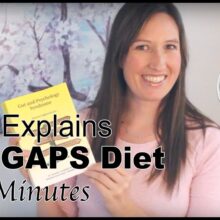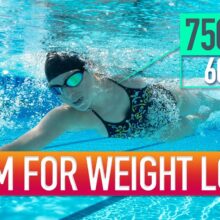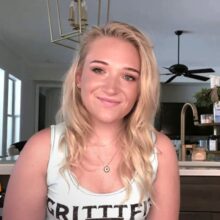Packard Pediatric Weight Control Program Overview
>> His confidence in school improved. He's trying to communicate to
the school that it's important that the children eat nutritious food. >> I just feel healthier and happier. >> It sort of gave me hope that
I could actually lose weight. >> It's not that big of a thing;
you just have to work on it. >> I was feeling tired; really depressed a lot. >> At 13, Dr. Robinson gave
me the diagnosis of being a pre-diabetic teen. >> I saw in our clinic there was an ad
for the pediatric weight control program. >> So my mom and me checked it
out and it was nice so we entered.
>> At first I was a little hesitant
to join the program because I had been on multiple diets before so I thought that
the program was just going to be another diet. >> The Packard Pediatric Weight Control
Program at Stanford is a 6 month program that meets weekly for 25 sessions. >> It's not a weight loss
program; it's a behavior change.
It's a behavior change program that teaches
families how to make healthy choices. >> The program is for kids,
ages 8 to 12 and 13 to 15. We have groups in both English and Spanish. Families come in small groups of not more
than 12 and they meet weekly as a group, but we also meet individually so that they can
really fine tune their goals on a weekly basis. >> Kids come with their parents to
an hour and a half session each week. >> I like that my family was supporting me. >> Our family learned a lot from every
week going to the meetings at the program. >> We really encourage both parent
and child to work together as a team. The better that the parents can work together,
the more successful the child will be.
>> The program is divided into 3 main parts. The first part we just focus on eating habits. In fact in the first month, we ask them not to
make any changes at all because the first tool to make changes is to see where you're starting. We ask families to journal their current eating
habits so they spend a lot of time learning about what they eat on a daily basis. >> They don't give you rules
in how to categorize foods; it's that they just give you
guidelines on how to look at foods. >> They learn that every food has a
color, either red, yellow or green. >> The traffic light system is a
system of like foods that are good to eat; they call them like greens. Like you can eat as many as you want of them. >> Green lights are the foods that actually
you don't really need to count as much; you don't have to think about
because they're very low calorie.
And for example, most vegetables
are green lights. Those are foods that you actually
want to add into your diet. >> And red light foods are
you try to reduce eating them because they're like the unhealthy ones. >> Red lights are the foods that we eat as part
of our diet, but we definitely don't need them in order to grow big and strong so most
of our diet should be yellow and green.
Yellows are the ones that we need, but
we do have to worry about the portions. >> Yellow light foods which you can eat 2
servings before they become a red light food. >> Every week they come back and they
tell us what was the total number of red lights that they ate. Once they've done that for a month and
they become really familiar with the number of red lights that they eat on a weekly
basis, we ask them to start setting goals. >> Because the kids are so involved in
tracking their own eating and exercise and setting their own goals,
the program kind of takes it out of the parent's hands
and that's a huge relief. >> The goal of the program is to
actually go from red to mostly yellow and add as many healthy greens as you can.
What's nice about the program is you never have to eliminate red lights completely;
you just need to reduce them. >> I found things that I liked and
I could have them and I found things that I shouldn't be having
and now I don't like them. Like white bread; I can't
eat white bread anymore. >> Well there are a few things
that I do like, but I can't have and every now and then I have them. >> I often ask the children
what they want to eat and I would hear not just
Elliot, but my other children say this
is a red or this is a green.
We can't have this; I already had that or so… It's kind of fun to do it that way. >> The second part of the program,
we add exercise to their goals. So we use a point system and they set
a daily goal to meet a certain number of exercise points during the week. >> I definitely try to do more exercise;
I found more sports that I like. >> She's much more active now than
she was and she thinks about it. She'll sort of say to me sometimes, "Mom, how am
I going to get my exercise points this weekend?" Which is also great for me because I don't have
to be thinking, "How am I going to get the kids out you know doing something this
weekend," so she kind of helps.
>> For some of the families, it's
the first opportunity they've had to exercise together as a family. >> We made sure as a family that every morning,
one of us was walking the kids to school. >> I like jumping on the trampoline with
my dad because he makes me bound so high. >> To see their parents in that situation
is really fun and really motivating and I get it kind of reinforces the
whole team idea of working together and being in this program together. Every week the kids come in and they are able
to see the changes in their heights and weights on a computer and the program is really good
at putting those changes into perspective because kids at this age are
growing and it's difficult for them to sometimes see change in their weight.
80 percent of the families who start our
program complete our program and 80 percent of those participations who finish the program
see a decrease in their child's overweight. The average change is about 6
to 8 percent over the 6 months. >> You don't feel that you go there worrying,
"Did I lose a pound; did I not lose a pound?" It's really about how to eat healthy
and being more physical in your life. >> Its just about learning how
to build and enhance your life. >> So the last part of the program, we really
focus on maintaining the tools they've learned. So we do some discussion sessions,
we do some individual sessions, and we actually have some exercise sessions
where we exercise together as a group. So the families will start
working on a maintenance plan that they can follow once the program is over. >> The pogrom is a roller
coaster, it has its ups and downs; loops that you like, loops that you don't like. But the whole experience is exhilarating
and it's so rewarding at the end.
>> Everyone towards the end of the
program is like laughing and hugging and they're like, "This was so much fun." I learned I'm not the only one
like…I'm not the only one like me. >> It's an amazing program because
over the course of 6 months, you see changes in the kids
that you really can't measure. >> The parents come to me and say, "I have not
seen my child this happy in such a long time. Thank you." They talk about the self-confidence
change that they've seen in their kids. The ability to make friends has changed;
just the way that they carry themselves. >> This program I think has had a
huge positive impact on his life. Now he's got some confidence, he's got
some comfort with who he is as a person. He has a path; he has a direction.
He's motivated because he's seen that success
and he wants to continue that and he wants to feel that success and
that confidence socially. >> Just do it. I mean it like completely just changed my life. >> After I did the program I thought,
"Well if I could do this and feel confident about myself after, then other
people who are shy can do it too." [ Music ]






